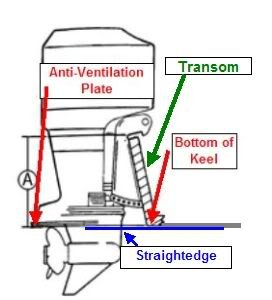Tony B
Guru
- Joined
- Jul 18, 2011
- Messages
- 1,251
- Location
- Cruising/Live-Aboard USA
- Vessel Name
- Serenity
- Vessel Make
- Mainship 36 Dual Cabin -1986
I have an older (1994?) Seaworthy Dinghy which were sold by West Marine way back when.
I have the 10' one which I think measures out at 9' 6".
My transom height is just under 15". It really needs to be about 17" for my O/B motor.
I want to add about 2 1/2" t0 3" to the height of my transom without doing a major transom rebuild.
My idea is to fabricate an aluminum plate about 12" high, 20" wide and 1/4" thick. and bolt it on from the outside. Then bolt some plywood to it on the inside above the existing transom top so I can attach the 90 lb. Tohatsu O/B to it.
Will 1/4" aluminum plate be too thin? Should I use steel and paint it?
has anyone else conquered this problem yet?
Thanks in advance.
I have the 10' one which I think measures out at 9' 6".
My transom height is just under 15". It really needs to be about 17" for my O/B motor.
I want to add about 2 1/2" t0 3" to the height of my transom without doing a major transom rebuild.
My idea is to fabricate an aluminum plate about 12" high, 20" wide and 1/4" thick. and bolt it on from the outside. Then bolt some plywood to it on the inside above the existing transom top so I can attach the 90 lb. Tohatsu O/B to it.
Will 1/4" aluminum plate be too thin? Should I use steel and paint it?
has anyone else conquered this problem yet?
Thanks in advance.


